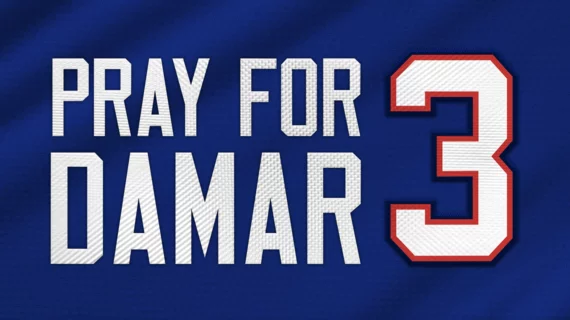Damar Hamlin update: Buffalo Bills safety now communicating with doctors after cardiac arrest
Damar Hamlin, the 24-year-old Buffalo Bills safety who went into sudden cardiac arrest during a game on Jan. 2, is showing significant signs of improvement, according to a new statement from his doctors.
“We would like to share there has been substantial improvement over the last 24 hours,” Timothy A. Pritts, MD, PhD, division chief of general surgery at the University of Cincinnati College of Medicine, said in a recorded statement to the media. “We have significant concern about him after the event that happened on the field. He is making substantial progress. As of this morning, he is beginning to awaken.”
Pitts also noted that Hamlin’s neurological function appears to be intact, though there is still “significant progress” he needs to make.
Hamlin’s doctors shared that he started to communicate as he awoke. In fact, he even asked if the Bills had won the game against the Cincinnati Bengals—a game that was suspended after Hamlin’s frightening injury.
“This marks a turning point in his ongoing care,” Pritts said.
A bit of context about Damar Hamlin and his diagnosis
Hamlin’s injury occurred after he absorbed a hit on the field during the first quarter. He did rise to his feet after the incident, but then collapsed to the ground.
Barry Maron, MD, a cardiologist with Lahey Hospital and Medical Center in Burlington, Massachusetts, told ESPN that the incident suggested commotio cordis.
“Clinically it seemed classic because there was the chest blow and then for five seconds or so he tolerated the arrhythmia that followed,” Maron explained. “That's what usually happens.”
Hamlin’s injury has brought sudden cardiac arrest into the national spotlight. Cardiologists such as Maron and other specialists have been sharing information about this serious condition with large audiences of members of the general public who may be unfamiliar with what it is and what it means for a person’s long-term health.

